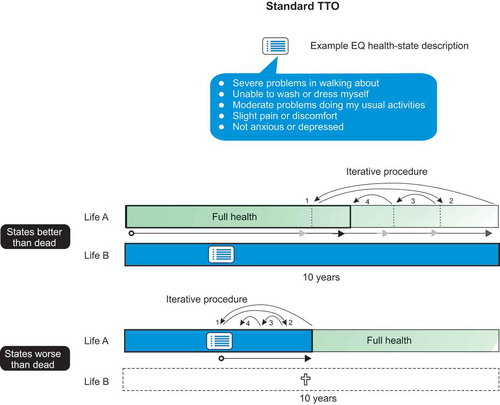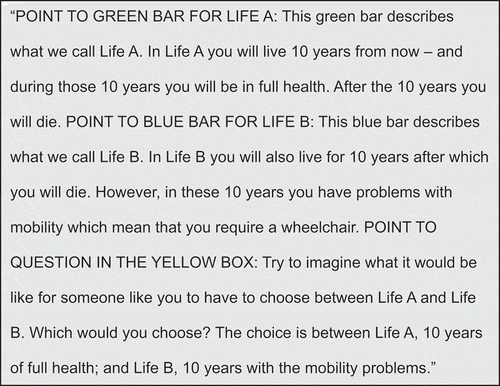Figures & data
Figure 1. Representation of the time trade-off (TTO) methodology as performed in the MVH study. The iterative procedure to arrive at the point (number of years) where a respondent is indifferent between a shorter life in full health, State A (dark green), and 10 years in a lesser health state, State B (light blue) is illustrated with the arrows. For states perceived as worse than dead by the respondent, the time spent in that state is followed by some time in full health. The iteration regards the number of years in full health that are needed to compensate for the years spent in a state worse than dead.

Figure 2. In the new EQ-VT protocol, lead-time TTO is used for states worse than dead. Here the respondent needs to picture a life in full health for 10 years before ending up in the state worse than dead for 10 years. . Maximally 10 years of life can be sacrificed to arrive at the point where the x years in full health are equivalent to a life of 10 years in full health followed by 10 years in a state worse than dead.



